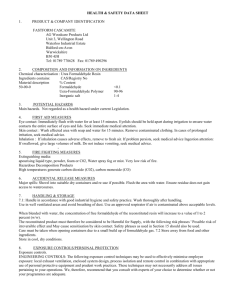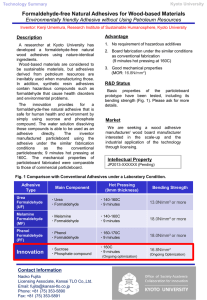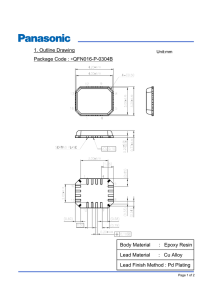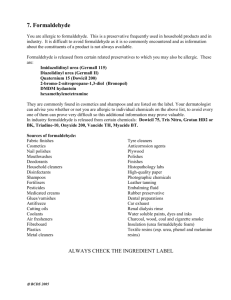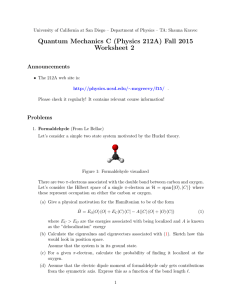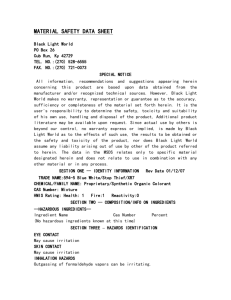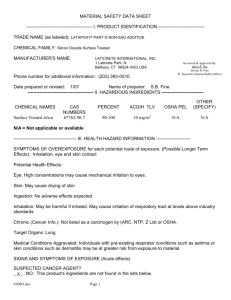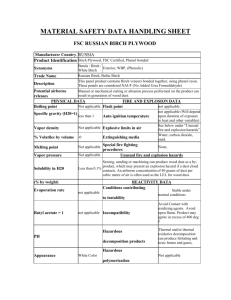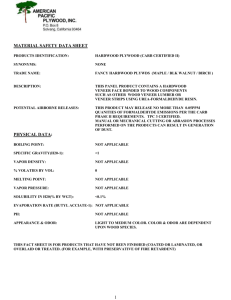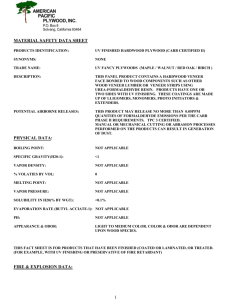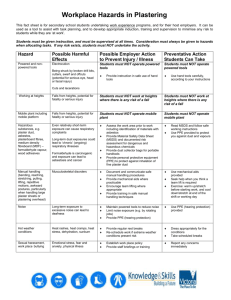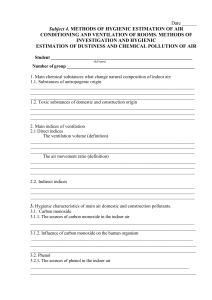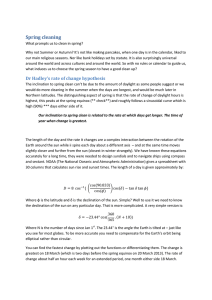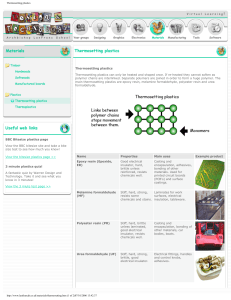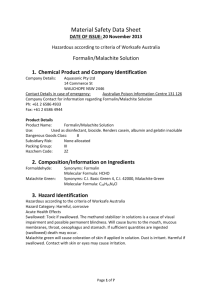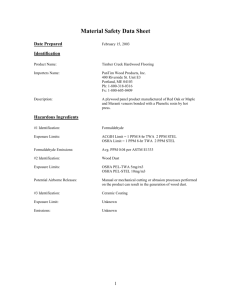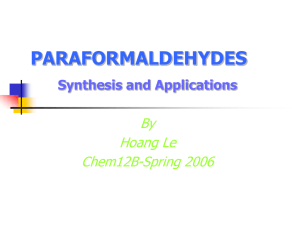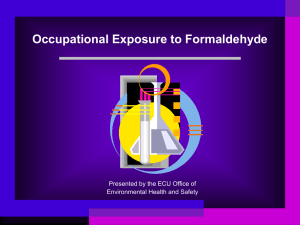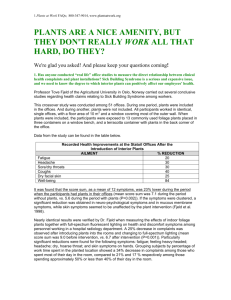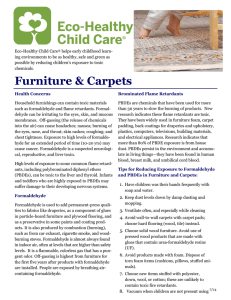COSHH SHEET 4
advertisement
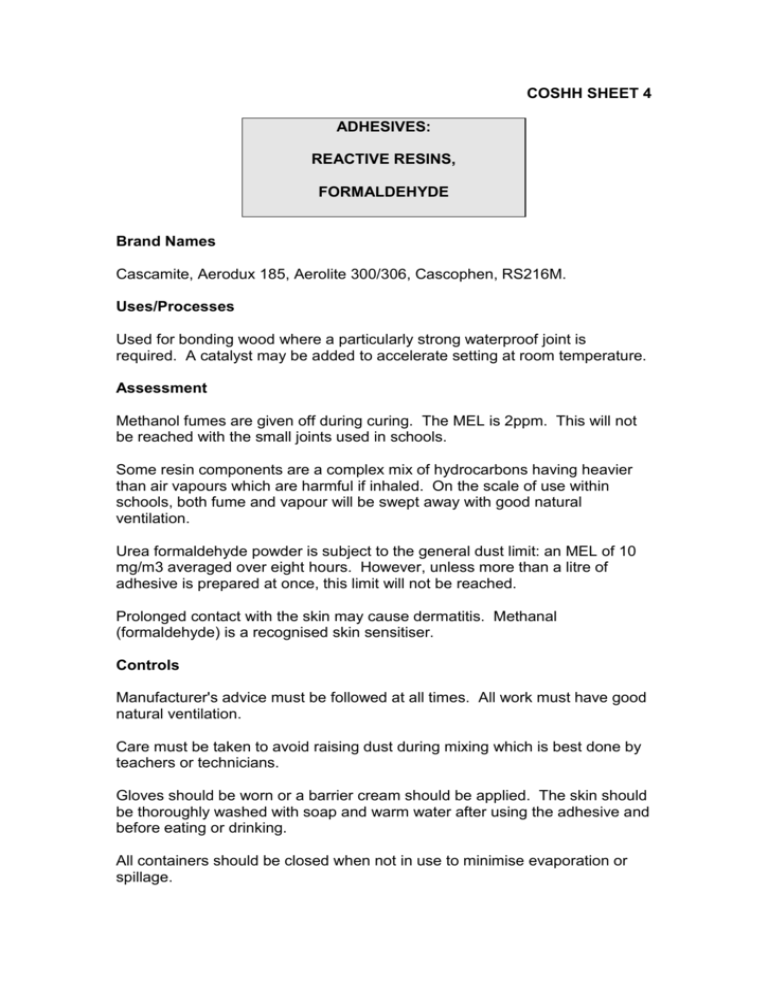
COSHH SHEET 4 ADHESIVES: REACTIVE RESINS, FORMALDEHYDE Brand Names Cascamite, Aerodux 185, Aerolite 300/306, Cascophen, RS216M. Uses/Processes Used for bonding wood where a particularly strong waterproof joint is required. A catalyst may be added to accelerate setting at room temperature. Assessment Methanol fumes are given off during curing. The MEL is 2ppm. This will not be reached with the small joints used in schools. Some resin components are a complex mix of hydrocarbons having heavier than air vapours which are harmful if inhaled. On the scale of use within schools, both fume and vapour will be swept away with good natural ventilation. Urea formaldehyde powder is subject to the general dust limit: an MEL of 10 mg/m3 averaged over eight hours. However, unless more than a litre of adhesive is prepared at once, this limit will not be reached. Prolonged contact with the skin may cause dermatitis. Methanal (formaldehyde) is a recognised skin sensitiser. Controls Manufacturer's advice must be followed at all times. All work must have good natural ventilation. Care must be taken to avoid raising dust during mixing which is best done by teachers or technicians. Gloves should be worn or a barrier cream should be applied. The skin should be thoroughly washed with soap and warm water after using the adhesive and before eating or drinking. All containers should be closed when not in use to minimise evaporation or spillage. Storage Store in a cool, dry place with containers tightly closed. If marked flammable it should be stored in a flameproof cabinet or store room. Disposal Small quantities can be added to solid refuse. Immediate Remedial Measures If swallowed: DO NOT INDUCE VOMITING. Seek medical attention. If vapour is inhaled: The casualty should be taken to fresh air and, if unconscious, turned on face. If breathing is irregular or has stopped, administer artificial resuscitation while medical attention is sought. If in the eyes: Irrigate immediately with water for at least ten minutes, holding eyelids apart. Obtain medical attention. If on the skin: Remove excess with hand cleaner, followed by washing with soap and water. Do not use solvents. If spilt in the workshop: The powder should be collected with an industrial vacuum cleaner to keep the dust to a minimum. Liquid resin should be contained and soaked up by an absorbent, non-flammable material (dry earth or sand). Do not allow to enter drains. Exclude sources of ignition and ventilate the area.
